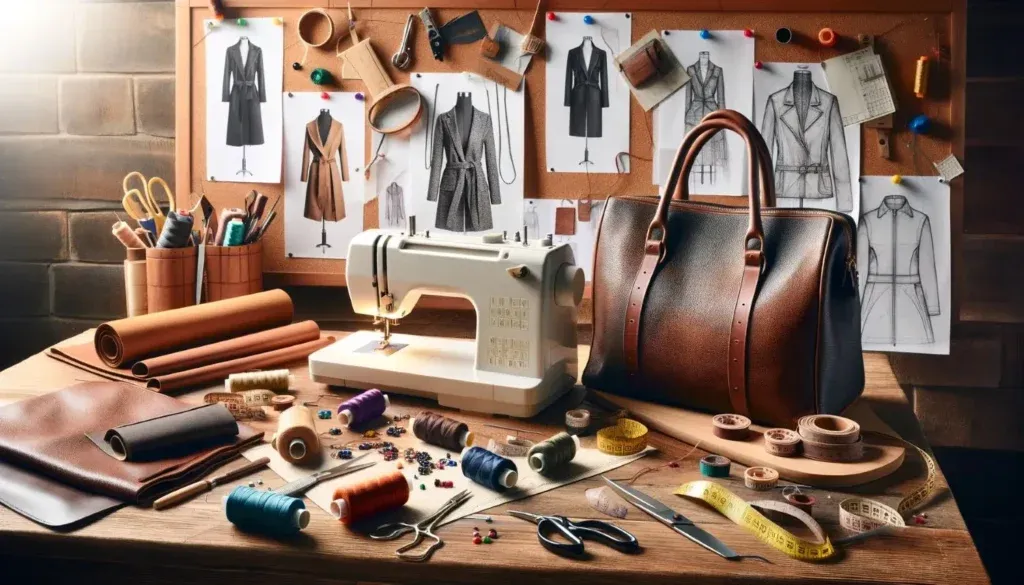Sewing with Faux Leather: Techniques for a Professional Finish
Sewing Faux Leather: A Guide to Getting the Best Results
Sewing Faux Leather: A Guide to Getting the Best Results
How to Sew Faux Leather
Faux leather is used for all sorts of things, but bags and jackets are the first that come to my mind. I love sewing with faux leather. I like the look and durability. If you’ve never worked with faux leather before, I suggest you start with a simple bag pattern.
If you want to learn how to sew faux leather, it’s not as difficult as you think. And you don’t need to buy a special, heavy-duty sewing machine. You just need to learn a few tricks for working with this fabric. I hope this post gives you the confidence to sew faux leather like a pro.
PinterestredditFaux leather is made by bonding a plastic coating that mimics the look of leather to a fabric backing. There are two main types of faux leather — PVC leather and PU leather. PVC (poly vinyl chloride) is nonporous and often used in upholstery projects, but it is made of harmful toxins. PU (polyurethane) is more breathable and the better choice for clothing. This post has tips on how to sew PU leather and PVC leather.
Faux leather comes in many different thicknesses and textures. Heavyweight faux leather works well for upholstery projects but it does not drape well. Lightweight or mediumweight faux leather works better for jackets and skirts.
If you’re looking for the best faux leather fabric, Fabric.com has some good options that are affordable. When searching for faux leather fabric, keep in mind that it is known by many names: fake leather, faux leather, pleather, PU leather, PVC leather, synthetic leather, artificial leather, imitation leather, man-made leather, and vegan leather. (Did I miss any?)
Selecting the Right Faux Leather Fabric
When selecting the right faux leather fabric, it’s important to consider factors such as durability and texture. Choosing faux leather fabric involves considering the colors and patterns available, as well as the fabric’s durability and care requirements.
When it comes to colors and patterns, faux leather fabric offers a wide range of options. You can find it in various shades, from classic black and brown to vibrant reds and blues. If you’re looking for a more unique look, there are also faux leather fabrics with textured patterns like crocodile or snake skin. Consider the overall aesthetic you want to achieve and choose a color and pattern that complements your desired style.
Durability is another crucial factor to consider. Faux leather fabric is generally known for being durable and long-lasting. However, it’s important to check the fabric’s thickness and quality to ensure it can withstand regular use. Look for fabrics with a higher weight and a strong backing material to ensure durability over time.
Finishing Touches and Care Tips for Faux Leather Projects
When caring for your faux leather projects, remember to use a soft cloth and gentle cleaner for regular maintenance. Faux leather is a versatile material that can be used for a variety of projects, from clothing to accessories to home decor.
To ensure your faux leather creations stay looking their best, follow these care instructions:
How to Sew Faux Leather
Sewing with faux leather has several advantages over real leather, besides it being the obvious choice for vegans and those making a humane statement. While not all leather is inhumane, many people choose vegan or faux leather on occasion if it suits their taste when animal welfare is a topic.
Faux leather is much easier to sew than real leather, and it doesn’t need to be punched through first in order to sew it, like thicker real leather. Faux leather is also much cheaper than real leather. It now comes in an array of styles and finishes. Even rarer types of faux leather like alligator and ostrich now look more and more like the real thing. In addition to becoming more realistic-looking in recent years, faux leather is much easier to clean than real leather. This is a big deal for people who wish to avoid the high-maintenance conditioning routine for real leather as well as the dry cleaning bill that goes with it.
Table of Contents
- 1 Sewing with Faux Leather Has Unique Challenges
- 2 Measure Twice, Cut Once…Differently
- 3 Change Your Sewing Foot
- 4 Use a Strap of Wax
- 5 Changing Your Needle and Other General Tips



Tegs:
Search
Recent Posts
-
Owl Sewing Pattern: Bring a Touch of Wisdom and Whimsy to Your Sewing Projects
Apr 14 2025
-
Sewing Machine Needles: Understanding Sizes and Choosing the Right One
Apr 14 2025
-
Sew Leather Like a Pro: The Best Sewing Machines for Leatherwork
Apr 14 2025
-
Gym Bag Sewing Pattern: Create a Personalized and Practical Carry-All
Apr 14 2025
Subscribe to Updates
Get the latest posts and fashion insights directly in your inbox.